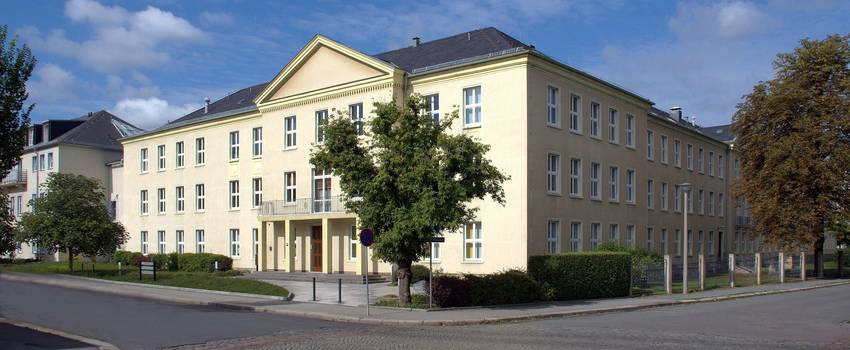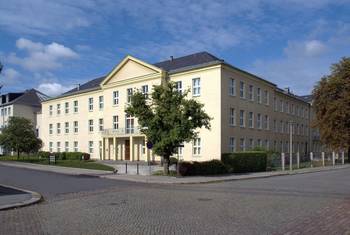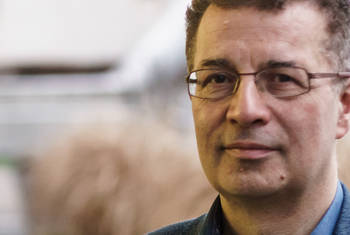Brigitte Voit How Can Chronic Lymphocytic Leukemia Be Treated Effectively in a Variety of Patients?
Brigitte Voit is the Chief Scientific Officer of the Leibniz Institute for Polymer Research in Dresden (Germany). Moreover, Voit is the head of the IPF Institute Macromolecular Chemistry and a faculty member of the Natural Sciences/Department for Chemistry at Technical University Dresden. Voit’s research extends beyond that of polymer research, into the field of leukemia treatment. She seeks to outline more effective treatment of chronic lymphocytic leukemia, defying the development of drug resistance.
Area of Research
Polymer Chemistry, Macromolecular Chemistry
since 2002
Managing Director and Chief Scientific Officer (Wissenschaftliche Direktorin)
Leibniz Institute of Polymer Research Dresden (more details)
since 1997
Head of IPF Institute of Macromolecular Chemistry
Leibniz Institute of Polymer Research Dresden
since 1997
Full Professor for Organic Chemistry of Polymers
Dresden University of Technology (Technische Universität Dresden)
1992-1997
Research Assistant
Technical University of Munich (Technische Universität München)
Chair of Macromolecular Materials
1991-1992
Postdoctoral Position
Eastman Kodak in Rochester, NY, USA, Corporate Research Laboratories
1989
Visiting Scientist
University of Arizona
1996
Habilitation
Technical University of Munich (Technische Universität München)
Thesis "Functional Polymers with Globular Structure - Dendritic Polymers Based on Polyesters and Polyamides"
1990
PhD
University of Bayreuth (Universität Bayreuth)
Thesis "Water Soluble Photo Resins Based on Azosulfonates"
1987
Diploma in Chemistry
University of Bayreuth (Universität Bayreuth)
Prizes
- Durham University Musgrave Lectureship Durham, UK (2014)
- Weissenberger Williams Lectureship, Eastman Kodak Company, Rochester NY, USA (2005)
- Georg Manecke Award of the GDCh (2000)
- Habilitation Award of the Division Macromolecular Chemistry of the GDCh (1996)
 © K. Wolf/IPF
© K. Wolf/IPF

Leibniz Institute of Polymer Research Dresden
The Leibniz Institute of Polymer Research Dresden (IPF) is one of the largest polymer research facilities in Germany. As an institute of the Leibniz Association, the IPF is committed to carrying out application-oriented fundamental research and receives its basic funding in equal parts from the federal and state governments.
The approach is holistic, covering synthesis and modification of polymer materials, their characterization and theoretical investigation, up to processing and testing. A special feature of the institute’s activities is the close cooperation of scientists and engineers and a broad range of modern instruments and methods are available including pilot plants allowing material and technology development under industry-relevant conditions.
The research focus is on materials problems and needs which can be approached by control of interface-related properties as well as interactions at interfaces and surfaces. A deep understanding of techniques and processes as well as of underlying physical aspects shall provide the basis to develop long-term concepts for technological implementation and applications of new polymer materials.
The topics dealt with at the institute are highly future-oriented. They include development of materials, technologies, and systems which are crucial to guarantee the strength of Germany’s economy also in future and to ensure both quality of living and sustainability. The polymer materials address innovations for further development in, e. g., medicine, transport and mobility, as well as energy efficiency and advanced communication technologies.
The institute's profile is determined by four strategic topics that are approached in close collaboration of all departments of the institute.
- Functional nanostructured interfaces and polymer systems
- Biology-inspired interface and material design
- Polymer networks: Structure, theory, and application
- Process-controlled structure formation in polymer materials
Based on these topics the IPF is linked with leading research groups in Germany and worldwide, but, first of all, it is part of the powerful network of research institutions in Dresden and a very active member of DRESDEN concept (Source: IPFDD).
Map
One the most common types of leukemia is chronic lymphocytic leukemia. To find the right treatment for an individual patient with that disease is a challenging task and many patients develop a resistance against the existing drugs. The purpose of the research presented by BRIGITTE VOIT in this video is to find new drugs that reduce cancer cells while not destroying other cells in the body. The researchers created two versions of organic molecules called dendrimers, differentiated by type of shell, and compared their effect to that of the commercial drug Fludarabine. The findings are highly relevant for treatment of leukemia: Both types of dendrimers destroy leukemia cells but one of them is more active against cancer cells and at the same time less harmful for healthy cells than Fludarabine. Moreover, the dendrimers have an effect on leukemia cells that are resistant to commonly used treatments.
LT Video Publication DOI: https://doi.org/10.21036/LTPUB10276
Dendrimer-Based Nanoparticles for Potential Personalized Therapy in Chronic Lymphocytic Leukemia: Targeting the BCR-Signaling Pathway
- Ida Franiak-Pietryga, Henryk Maciejewski, Kinga Ostrowska, Dietmar Appelhans, Brigitte Voit, Małgorzata Misiewicz, Paweł Kowalczyk, Maria Bryszewska and Maciej Borowiec
- International Journal of Biological Macromolecules
- Published in 2016









